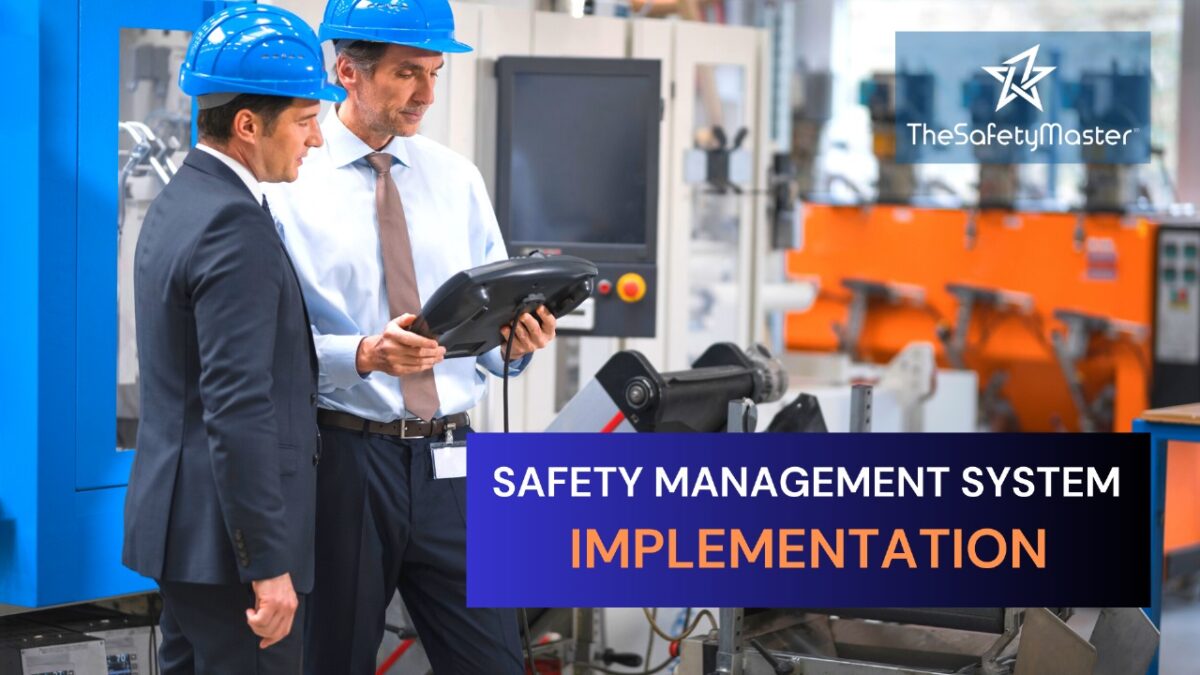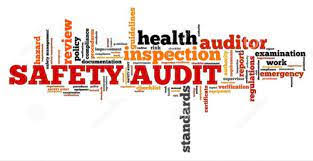The Key Steps for Successful Safety Management System Implementation in High-Risk Industries

The Importance of Construction Safety Audits: Ensuring a Secure Working Environment for Employees
October 26, 2023
Streamlining Safety Protocols: How Safety Software Is Revolutionizing Indian Industrial Practices
October 27, 2023In this article, we embark on a journey to unravel the secrets behind successful safety management system implementation in high-risk industries. As we delve into the intricacies of this crucial process, we will shine a spotlight on the pain points faced by organizations operating in hazardous environments. Brace yourself as we reveal the key steps that can pave the path to improved safety protocols and peace of mind. Prepare to gain invaluable insights, practical strategies, and time-tested techniques that will equip you with the tools needed to safeguard your workforce. Get ready to unlock a new level of safety excellence that every reader desires. Now let’s dive in!
Introduction
High-risk industries, with their inherently hazardous work environments, demand utmost attention to safety. Whether it’s heavy machinery, chemical handling, or working at extreme heights, ensuring the well-being of workers is paramount. This is where a robust Safety Management System (SMS) comes into play. In this article, we will delve into the key steps for implementing a successful Safety Management System in high-risk industries. We will explore the crucial elements that need to be considered to create a safer work environment for employees and mitigate potential risks. By following these steps, you can establish a comprehensive framework that not only meets regulatory requirements but also fosters a culture of safety and continuous improvement within your organization
Understanding the Importance of Safety Management Systems
Safety management systems play a pivotal role in high-risk industries, serving as robust frameworks that ensure the safety and well-being of employees. These systems provide a structured approach to identifying potential hazards, assessing risks, and implementing effective controls. By prioritizing safety, organizations can minimize workplace accidents and create an environment that fosters productivity and employee satisfaction. The importance of safety management systems cannot be overstated. They are not mere bureaucratic formalities but rather essential tools for safeguarding human lives and preventing catastrophic incidents. By implementing these systems, companies demonstrate their commitment to their workforce’s welfare, promoting a culture of care and responsibility. Moreover, a well-functioning safety management system instils confidence in employees, empowering them to work with peace of mind while enhancing their loyalty towards the organization.
Adhering to safety management systems also brings numerous benefits beyond risk mitigation. Improved safety standards often result in lower insurance premiums and reduced legal liabilities for businesses. Furthermore, organizations that prioritize worker safety tend to attract top talent who value an employer’s dedication to maintaining a secure workplace environment. Ultimately, investing in effective safety management systems is a win-win situation: it protects both employees’ physical well-being and the financial interests of the company.
Conducting a Thorough Risk Assessment
Conducting a Thorough Risk Assessment: The initial step towards implementing a successful Safety Management System (SMS) in high-risk industries is conducting a meticulous risk assessment. This crucial process involves identifying and evaluating potential hazards, vulnerabilities, and risks that may pose harm to employees, the environment, or assets. By diligently examining every aspect of the organization’s operations, from equipment and machinery to work processes and external factors, companies can uncover areas that require immediate attention.
Through this comprehensive risk assessment exercise, organizations gain valuable insights into potential safety gaps and vulnerabilities. By assessing each identified risk against predefined criteria such as likelihood of occurrence and potential severity of consequences, companies can prioritize their efforts efficiently. Additionally, by involving key stakeholders across different departments in this examination process, organizations foster a collaborative culture built on collective accountability for safety.
By thoroughly conducting risk assessments on an ongoing basis and continually updating them as new hazards emerge or conditions change within the industry, organizations demonstrate their commitment to proactively managing risks. This serves as a foundation for creating a safety-first culture where employees feel confident in their surroundings while being motivated to actively contribute to the overall success of the SMS implementation journey.
Developing Clear Safety Policies and Procedures
Developing Clear Safety Policies and Procedures: In order to establish a robust safety management system, it is imperative for high-risk industries to develop clear and concise safety policies and procedures. These documents serve as the foundation for a safe working environment, outlining the guidelines, rules, and expectations that must be adhered to by all employees.
Safety policies should articulate the organization’s commitment to creating a culture of safety and emphasize the importance of individual responsibility. They should address key elements such as hazard identification, risk assessment, emergency response protocols, and compliance with relevant regulations. By clearly communicating these policies to employees, organizations create awareness regarding their commitment to prioritizing safety.
Furthermore, developing comprehensive safety procedures is essential in providing step-by-step instructions for handling various tasks in a safe manner. These procedures need to be specific and easily understandable, while also accounting for potential risks that may arise during operations. By incorporating best practices from industry standards and soliciting input from employees with relevant expertise, organizations can ensure that their procedures are practical and effective. Ultimately, clear safety policies and procedures foster an environment where employees feel empowered to take the necessary precautions in high-risk industries while carrying out their work efficiently.
Content: Implementing well-defined policies ensures that everyone understands their role in maintaining a safe working environment. By establishing clear expectations through these guidelines, organizations empower their workforce with the knowledge required for efficient risk management. This proactive approach fosters a sense of confidence among employees as they navigate potential hazards confidently while performing their duties diligently. Through detailed policies and procedures, high-risk industries pave the way towards safer operations while instilling optimism about achieving occupational well-being
Establishing Effective Communication Channels
Establishing Effective Communication Channels: Clear and efficient communication is paramount in any organization, particularly when it comes to safety management in high-risk industries. Creating robust communication channels ensures that vital safety information reaches all levels of the organization promptly and accurately.
One key step towards establishing effective communication channels is to implement a top-down approach. This means that senior management should take the lead and actively communicate safety policies, procedures, and expectations to all employees. By setting a clear example, management demonstrates their commitment to safety, fostering a culture where everyone feels responsible for their own safety as well as the safety of others.
To further enhance communication, organizations should utilize various platforms such as regular safety meetings, toolbox talks, newsletters, and digital platforms for sharing important safety updates. By providing multiple avenues for communication, employees have easy access to relevant information at their fingertips. This not only ensures that everyone stays informed but also encourages them to actively engage in discussions and share valuable insights or concerns.
Remember, effective communication is a two-way street – it’s not just about disseminating information but also actively listening to employees’ feedback and addressing any concerns they may have. By creating an environment where open dialogue is encouraged and valued, organizations can foster trust and collaboration among employees while reinforcing a strong commitment towards maintaining a safe working environment for all.
Providing Comprehensive Safety Training
Providing Comprehensive Safety Training: Ensuring the safety of employees is paramount in high-risk industries, and comprehensive safety training plays a vital role in achieving this objective. By equipping workers with the necessary knowledge and skills, organizations can significantly reduce accidents and injuries. Training programs should cover a wide range of topics, including hazard identification, emergency response procedures, proper use of personal protective equipment (PPE), and safe work practices.
One approach to comprehensive safety training is to use a blended learning approach that combines various methods such as classroom sessions, hands-on exercises, virtual simulations, and e-learning modules. This allows for interactive learning experiences that engage employees actively and cater to different learning styles. Providing regular refresher courses is also crucial to reinforce knowledge and keep safety practices at the forefront of employees’ minds.
Moreover, it is essential for organizations to foster a positive safety culture during training sessions. Emphasizing the importance of individual responsibility towards safety creates a sense of collective ownership among employees. Encouraging open communication regarding safety concerns or near-miss incidents creates an environment where everyone feels comfortable sharing their experiences and ideas for improvement. Remember, investing in comprehensive safety training not only protects lives but also contributes to increased productivity and overall profitability within high-risk industries.
Implementing Regular Safety Inspections and Audits
Implementing Regular Safety Inspections and Audits: Regular safety inspections and audits are vital components of a successful safety management system in high-risk industries. These proactive measures help identify potential hazards and assess the effectiveness of existing safety protocols. By conducting regular inspections and audits, organizations demonstrate their commitment to employee well-being and create a culture that prioritizes safety at all levels.
During inspections, trained professionals thoroughly examine work areas, equipment, and processes to ensure compliance with safety standards. They inspect for any signs of wear and tear, potential mechanical failures, or deviations from established protocols. Furthermore, they assess the adequacy of personal protective equipment (PPE), emergency response plans, and proper signage to mitigate risks effectively.
Audits provide an opportunity for a comprehensive review of the entire safety management system. They evaluate the implementation of policies and procedures across all departments to identify areas for improvement or potential gaps in training. Auditors also review incident records to determine if appropriate corrective actions have been taken following previous incidents. Through regular inspections and audits, organizations can proactively address any safety concerns before they escalate into accidents or injuries, fostering a safer work environment that instils confidence among employees
Encouraging Employee Engagement and Participation
Encouraging Employee Engagement and Participation: Fostering a culture of active employee engagement and participation is crucial for the successful implementation of a safety management system in high-risk industries. When employees feel valued and empowered to contribute to safety initiatives, they become proactive guardians of their own well-being and that of their colleagues.
One effective approach is to establish regular safety meetings or toolbox talks, providing a platform for open discussions on safety concerns, best practices, and lessons learned. This encourages employees at all levels to actively share their experiences, insights, and suggestions for improving safety measures. By fostering a collaborative environment where everyone’s voice is heard and respected, organizations can tap into the collective wisdom of their workforce, unlocking innovative solutions that may have otherwise gone unnoticed.
Furthermore, involving employees in safety committees or task forces not only gives them a sense of ownership but also enhances their understanding of the intricacies involved in mitigating risks. By actively involving employees in decision-making processes related to safety policies and procedures, organizations demonstrate their commitment to creating a safe working environment. This heightened level of involvement not only boosts morale but also establishes a shared responsibility among all employees towards maintaining high standards of safety excellence.
Remember: cultivating an environment where individuals feel comfortable voicing their ideas leads to heightened collaboration and inspires continuous improvement within an organization’s safety culture.
Creating a Culture of Accountability and Continuous Improvement
Creating a Culture of Accountability and Continuous Improvement: In order to establish a culture of accountability and continuous improvement within the realm of safety management, it is imperative to foster an environment where every individual takes ownership of their actions and strives for excellence. This can be achieved through effective leadership, clear expectations, and ongoing training. By embracing accountability, employees understand the impact of their decisions on overall safety outcomes and take responsibility for their actions.
A thought-provoking approach to encourage continuous improvement is to implement a system that rewards innovative ideas and proactive behaviour. Creating platforms where employees can share their suggestions for safety enhancements fosters a sense of empowerment and engagement. Moreover, recognizing individuals who consistently demonstrate exemplary safety practices not only encourages them but also inspires others to follow suit.
Embracing continuous improvement also involves conducting regular evaluations and audits to identify areas for enhancement within the safety management system. Encouraging open communication channels for reporting near-misses or potential hazards facilitates learning from mistakes and drives proactive measures to prevent future incidents. By instilling a mind-set of constant growth, organizations can ensure that their safety management systems evolve with changing circumstances, ultimately enhancing overall safety performance in high-risk industries.
Implementing a Robust Incident Reporting and Investigation Process
Implementing a Robust Incident Reporting and Investigation Process: Within high-risk industries, incidents can occur despite the best safety measures in place. Therefore, it is crucial to establish a robust incident reporting and investigation process. This system allows for prompt identification, analysis, and resolution of potential hazards, ensuring continuous improvement in safety practices.
When an incident occurs, employees should be encouraged to report it immediately through a designated reporting mechanism. This could be an online portal or a dedicated hotline that guarantees confidentiality and non-punitive measures. By fostering an environment where reporting is seen as a constructive action rather than punishment, employees become more inclined to come forward with valuable information.
Once reported, incidents should undergo detailed investigations carried out by competent personnel who possess strong analytical skills. These investigators must gather evidence, interview witnesses, review procedures, and examine any contributing factors. The goal is not to assign blame but rather to identify root causes and develop effective preventive measures. Ultimately, this process cultivates a culture of continuous learning from mistakes while uplifting employee morale by demonstrating the organization’s commitment to their safety and well-being.
Utilizing Technology to Enhance Safety Management
Employing cutting-edge technological solutions is instrumental in bolstering safety management systems within high-risk industries. By leveraging advanced software applications, real-time data can be collected and analysed, allowing for swift identification of potential hazards or weaknesses in existing safety protocols. These tools enable organizations to proactively address safety concerns, minimizing the likelihood of accidents or incidents occurring. One remarkable technology that holds immense promise is the Internet of Things (IoT). Through interconnected devices and sensors embedded within machinery and equipment, companies can gather valuable data on operational performance and identify potential safety risks. This allows for predictive maintenance, ensuring that maintenance activities are carried out before a critical failure occurs, thereby reducing downtime and enhancing overall safety.
Moreover, augmented reality (AR) offers an innovative approach to training employees in high-risk industries. By using AR headsets or mobile devices equipped with AR apps, workers can receive immersive training experiences that simulate dangerous scenarios without exposing them to actual risks. This not only enhances their understanding of safety procedures but also boosts their confidence in dealing with challenging situations effectively.
By embracing technological advancements such as IoT and AR, organizations demonstrate a proactive commitment to maintaining a safe working environment. The result is increased efficiency, reduced accidents, improved employee morale, and ultimately a greater sense of trust between management and workforce – fostering an optimistic culture where safety takes precedence above all else.
Evaluating and Monitoring the Effectiveness of the Safety Management System
In order to ensure continuous improvement and maintain a high level of safety in high-risk industries, it is crucial to regularly evaluate and monitor the effectiveness of the safety management system. This involves conducting thorough assessments, analysing data, and making informed decisions to enhance safety measures. One effective way to evaluate the system’s effectiveness is by utilizing key performance indicators (KPIs) that are specific to safety. By tracking these KPIs, such as incident rates, near misses, and employee engagement in safety initiatives, organizations can gauge their progress over time. This not only allows them to identify areas for improvement but also highlights success stories that can be acknowledged and celebrated.
Furthermore, conducting regular audits and inspections plays a vital role in monitoring the system’s effectiveness. These assessments involve reviewing policies and procedures, inspecting facilities and equipment for compliance with safety standards, interviewing employees about their understanding of protocols, and observing work practices. The findings from these audits provide valuable insights into any gaps or deficiencies in the system that need immediate attention.
By consistently evaluating and monitoring the effectiveness of their safety management system, organizations demonstrate their commitment towards creating a safe working environment. This ongoing process promotes a culture of continuous improvement where employees feel empowered to provide feedback, propose innovative solutions, and actively participate in enhancing workplace safety measures. Ultimately, this results in reduced incidents, increased morale among employees, and improved overall performance.
Conclusion
In conclusion, the successful implementation of a Safety Management System is crucial for high-risk industries to ensure the well-being of their workforce and maintain a safe working environment. By following the key steps outlined in this article, organizations can proactively identify and mitigate potential hazards, foster a culture of safety, and ultimately enhance operational efficiency. Remember, safety is not just a checkbox to be ticked off; it is an ongoing commitment that requires continuous improvement and adaptability. Embracing these steps with dedication and diligence will undoubtedly pave the way towards a safer future for both employees and employers alike.




